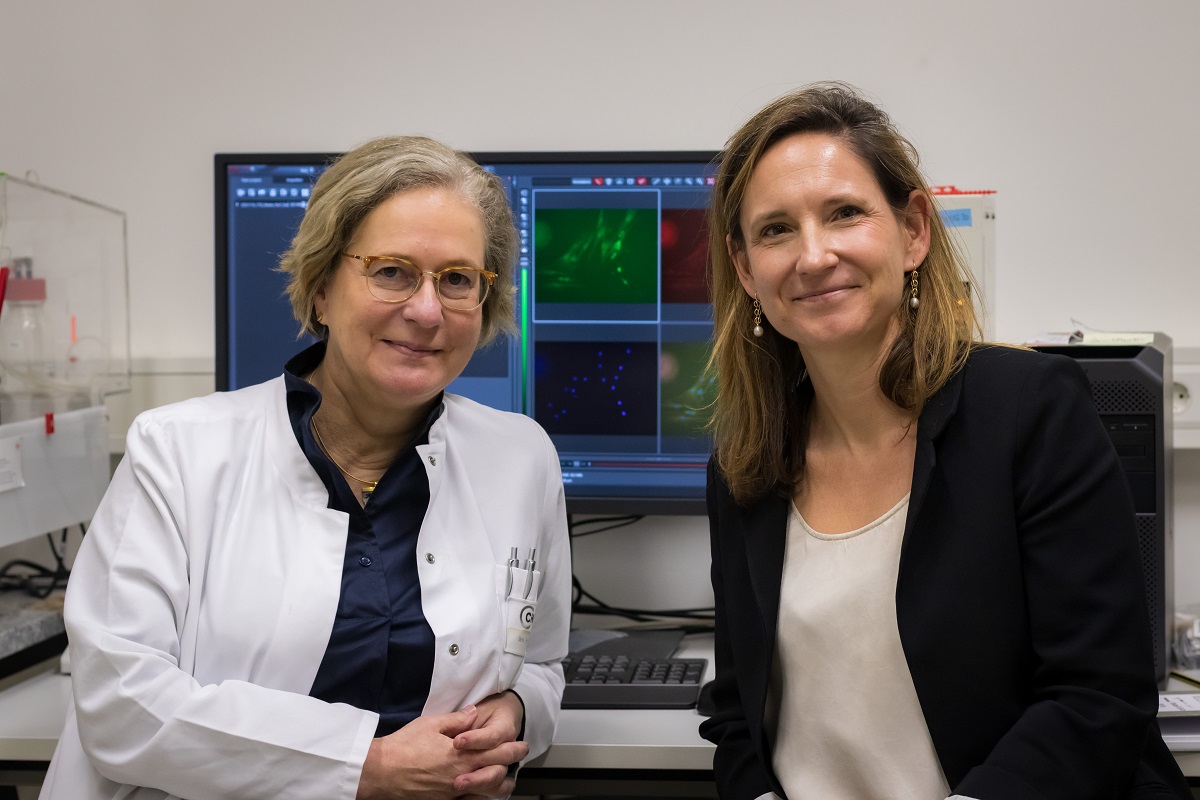
News
Deep expertise, and a bold vision: MyoPax launches in Berlin
04.01.2023 / MyoPax develops regenerative therapies for previously incurable muscle diseases. An interview with co-founders Prof. Simone Spuler and Dr. Verena Schöwel-Wolf, now board member and CEO respectively

MyoPax emerged from the Max Delbrück Center and Charité. What’s your company all about?
Dr Schöwel-Wolf: Muscle disorders can drastically reduce quality of life and are potentially life-threatening. In Prof. Simone Spuler’s lab at the Experimental and Clinical Research Center (ECRC), our team has developed an innovative stem cell technology that could fundamentally change this situation. With the new method, it is now possible to produce pure and highly regenerative muscle stem cells that have the potential to rebuild human muscles and replenish their stem cell pools for the long term. Through the use of cell engineering and gene editing technologies, we are developing, for the first time ever, therapies for local muscle defects, acute muscle wasting disorders, and hereditary muscular dystrophies that were previously untreatable or insufficiently treatable.
Prof. Spuler: Our start-up is breaking new ground, and that requires courage. Our model doesn’t exist yet. But our team has been combining muscle research with clinical work at the Outpatient Clinic for Muscle Disorders for many years already. It is clinically and scientifically experienced and has the necessary regulatory and manufacturing expertise.
How were you supported during the spin-off phase?
Dr. Schöwel-Wolf: The Max Delbrück Center help moved our project forward in its incubator, especially through the PreGoBio and SPOT programs. The Berlin Institute of Health (BIH) significantly boosted and accelerated therapy development via its SPARK program. We also received support from a number of other sources, ranging from the ECRC’s technology platform to the Helmholtz Validation Fund, the Else Kröner-Fresenius Foundation, and the Gisela Krebs Foundation, to the German Federal Ministry of Education and Research, which is funding our first-in-human clinical trial. Ascenion and the technology transfer unit of Charité provided assistance during the patenting process.
MyoPax has been accepted into the incubator program of the Copenhagen-based BioInnovation Institute (BII) Foundation.
Dr. Schöwel-Wolf: We are thrilled to have found another inspiring network in Europe. Through our second company, MyoPax Denmark ApS, we have received a €1.3 million convertible loan from the BII Foundation. This is the starting point for building MyoPax into a globally competitive business. BII is also providing strategic guidance on business development issues.
What are you tackling first?
Dr. Schöwel-Wolf: In 2023, we will be launching a trial focusing on a rare children’s disease in which the bladder’s sphincter muscle doesn’t fully develop. This muscle defect is due to a disruption in cell migration during embryonic development and causes lifelong incontinence. We aim to restore this muscle by generating muscle stem cells from a muscle biopsy and injecting the cells right there where they are missing. The fact that this disease is characterized by a well-defined muscular defect makes it well suited for testing the safety and efficacy of our therapeutic approach for the first time.
Prof. Spuler: On top of that, when it comes to rare diseases, it’s possible to apply for provisional marketing authorization after the first clinical trial. Rare diseases are well protected by regulatory bodies, especially from competition. We are scheduled to complete this first trial in 2026.
What are the next milestones?
Prof. Spuler: We are developing three therapeutic platforms. The first technology uses the patients’ natural muscle stem cells to repair muscular defects that are not caused by a genetic disorder. The second platform under development focuses on hereditary muscular dystrophies. Here, we seek to treat individual muscles with the patient’s own cells. Gene editing tools are used to correct the genetic defect in the cells outside the body. The cured cells are then injected into the muscle. In this way, we produce a personalized therapy for each patient. The third platform is the furthest away from a clinical trial. Here, induced pluripotent stem cells are used to generate the muscle stem cells. This process is based on blood cells, which are available in large non-patient-specific batches, thus making the technology faster and more cost-effective.
Interview: Christine Minkewitz / Campus Berlin-Buch GmbH
Source: The interview first appeared in the 02/2022 issue of the magazine buchinside.
Further information
- Spuler Lab
- Myology
- MyoPax
- A pioneer in muscle repair
- Research on muscular dystrophy at the Max Delbrück Center
- Support for spin-offs at the Max Delbrück Center
- Experimental and Clinical Research Center (ECRC)
- SPARK Program of the Berlin Institute of Health (BIH)